You stand in front of the guidebooks in your local bookstore with a sinking feeling of despair – how can there be so many; and all about Europe? The visions you had of quiet walks alone along canals with frequent breaks to sip lattes in abandoned street-side cafes are being shattered with a loud crash as you realize that you’ll hardly be alone this summer.
Crowds of camera-toting tourists shove their way into your dream and you succumb to the realization that “it’s all been done,” especially in Europe. Snap out of it! If you’re willing to leave that guidebook in the hotel sometimes and make the “road less traveled” your highway to adventure, there are still LOTS of untouched places in Europe with smiling locals ready to introduce you to their local brand of latte.

Along the Elbe River, almost all the way to Dresden, sits the fairytale castle town of
Meissen. Even in late July, the height of the tourist season, we had this town to ourselves. The Schloss Albrechtsburg was the first castle built to house royalty in all of Germany. It’s at the heart of what became Saxony and has been restored to its former glory. It’s well worth a long afternoon’s wander: Picnic in the park next to the cathedral overlooking the river and enjoy the flutist who frequents the spot.
“You may just be the only ‘tourist’ in town.”
Don’t miss out on the local pastry; the Meissen flummel, which has an amusing story that you’ll have to discover for yourself. Wear solid walking shoes and climb the narrow streets built into the hillside and shop in the closet-sized medieval haunts of local artisans. Rent a bicycle and cycle along the river. You may just be the only “tourist” in town.
Book a flight to Germany and read our Dresden Travel Guide
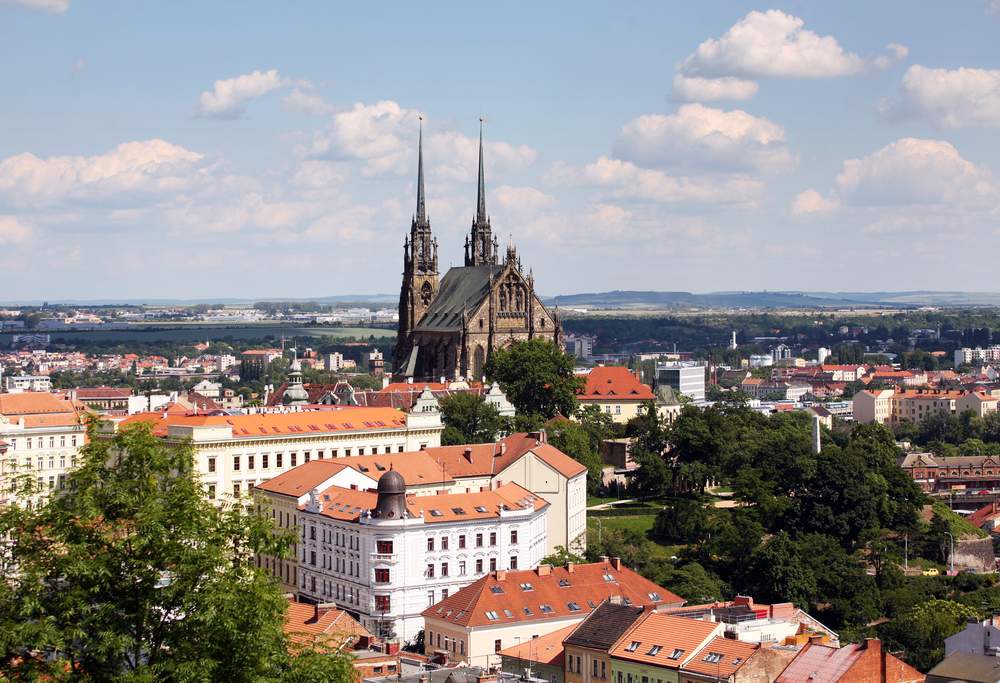
If
Prague seems “over-done,” that’s because it is. Not so for the second largest city in the Czech Republic.
Brno has that slower moving, small town feel and is full of history and cultural quirks of its own. It’s the only town we know of proud to be built on the backs of “four idiots.” You’ll have no trouble finding cafes where you can savor local delicacies, or order an “authentic” New York style pizza from a guy who lived there for ten years and even knows to offer Americans a glass of ice with their soda.
“It’s the only town we know of proud to be built on the backs of ‘four idiots.’”
Give yourself time to wander. Find the Brno alligator and ask a local for the story. Time your visit for late August and you might just catch the Brno International Folklore Fest in which the various local culture groups turn out to sing and dance and play their traditional music for one another in the main square and down the side streets. You haven’t lived until you’ve mopped up the last bit of sauce from your plate of
svickova with a piece of
knedliky and washed it down with a cheap Czech beer.
Find cheap airfare to Czech Republic and book a hostel in Brno hotel.
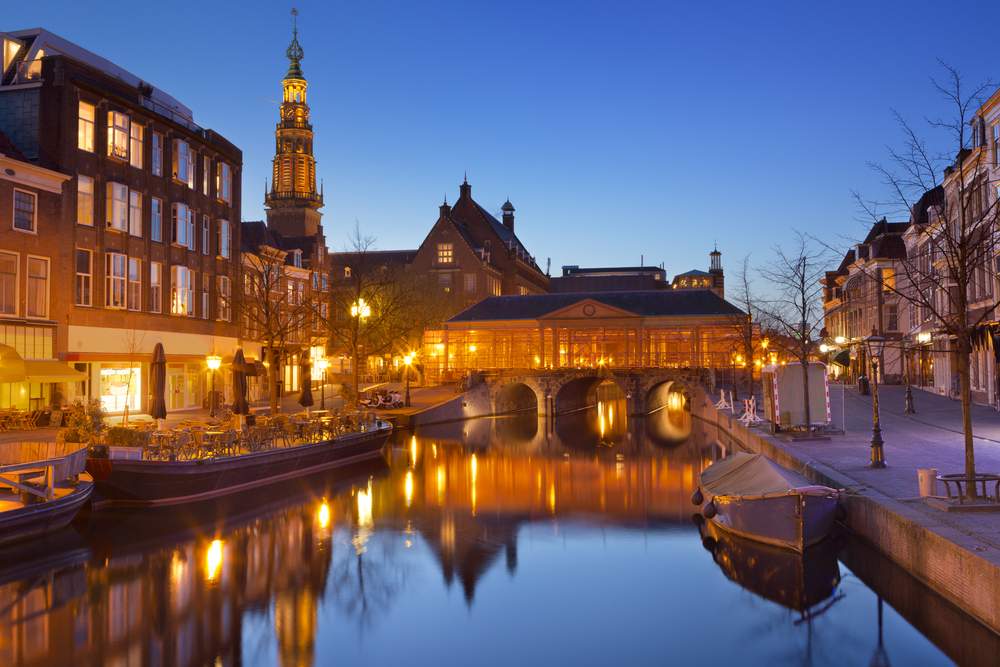
Just off of the auto route about halfway between
Amsterdam and Delft, the little town of Leiden rests largely overlooked by the mass of tourists. Especially during the shoulder seasons,
Leiden feels like a beautiful color plate out of a children’s storybook: smooth, glassy canals dotted with swans, ancient buildings, and 19 windmills to chase at random. Be sure to take the time to visit a windmill and be amazed by their unique place in the history and culture of the area.
“Leiden feels like a beautiful color plate out of a children’s storybook: smooth, glassy canals dotted with swans, ancient buildings, and 19 windmills to chase at random.”
Between pastries and coffee and breaks for daydreaming in a boat on the canal, you might be interested in visiting the very little known American Pilgrim’s Museum, tucked away on a side street off of the main canal. It doesn’t look like much from the outside, but the kindly docent is a font of interesting information, as the museum represents his life’s work. If you have any interest in the Pilgrim settlers of America, you won’t want to miss it.
Book a flight to Amsterdam and learn the top 10 Dutch phrases you need to know
4).Aachen, Germany
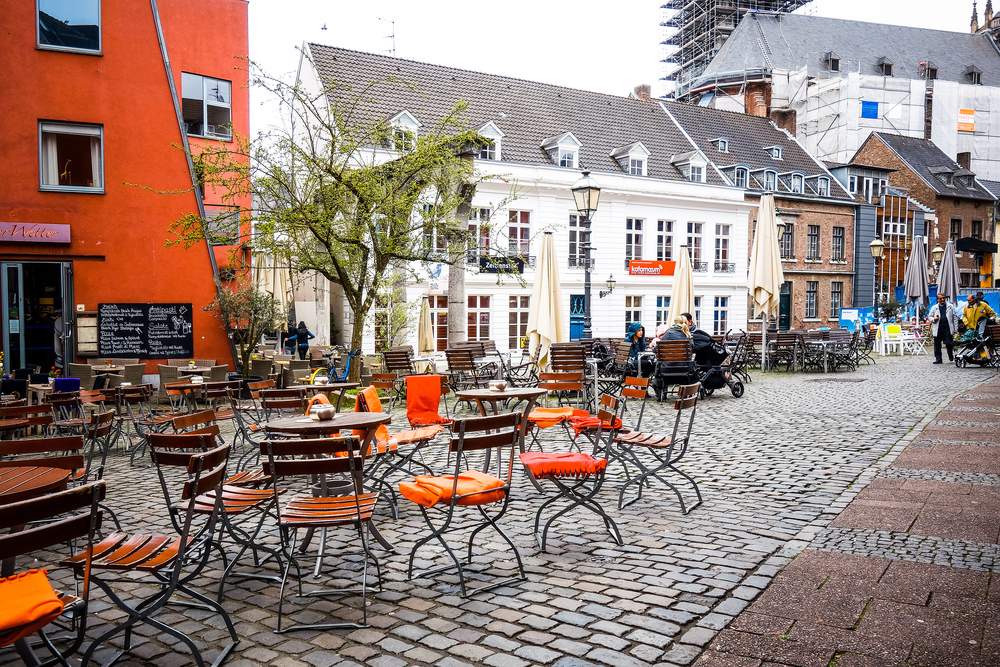
The seat of the empire of Charlemagne,
Aachen rests on the border of Germany with the Netherlands and Belgium. The main attraction of the city is, without question, the incredible Dom built by Charlemagne, beginning in 792 AD. Today, it is free to visit and an impressive display of the blended power of church with an ancient state. Charlemagne himself is laid to rest in a golden box beneath the towering colored glass windows of the Palatine Chapel.
“The main attraction of the city is, without question, the incredible Dom built by Charlemagne…”
Equally fascinating is the Schatzkammer, the treasure chamber of the church; home to an impressive gold gilt and jewel encrusted bust of the great emperor, his hunting knife and horn, as well as numerous crowns and royal gems combined with relics of the church. Be sure to window-shop your way through the purveyors of amazingly intricate baked goods lining the cobbled streets and have a drink at the unique little pub built into the back of the church while you listen to the accordion players in the square.
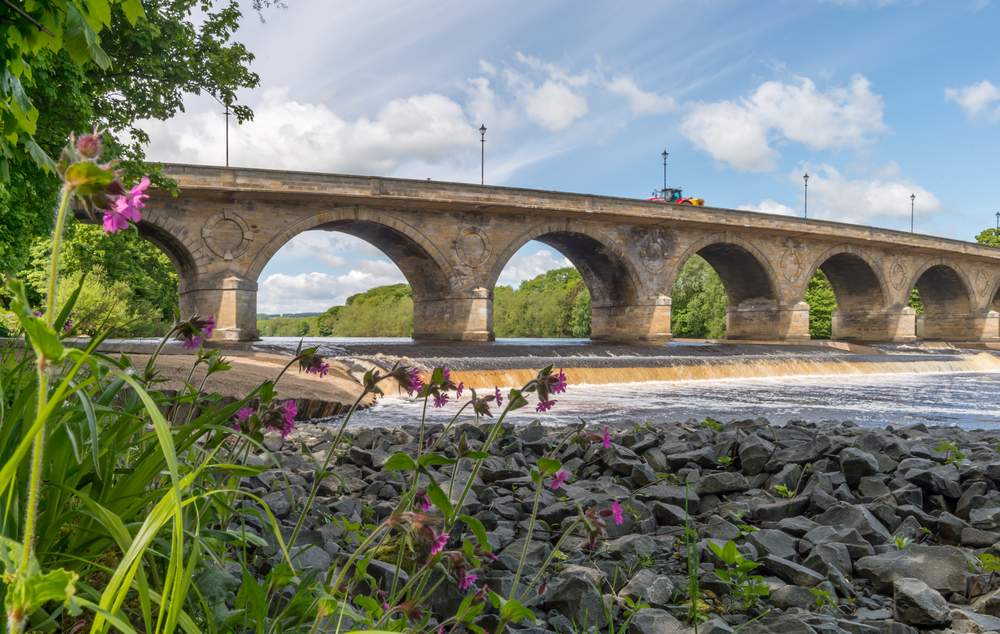
If
Hexham gets more than a paragraph in your guidebook I’ll be surprised. This little hamlet in the north of England is a medieval gem just waiting to be explored. The centerpiece of town is Hexham Abbey – a site of worship since 674 AD.
Explore the church and then stroll the grounds of the beautiful park and gardens set in the center of town before heading off to find that perfect little café. We recommend the one right next to the first purpose-built prison in the UK, just around the corner from the Abbey itself. We’d tell you the name, but then everyone might go there… so you’ll have to enjoy discovering it for yourself!
Be sure to rent a car or a bike and head north of town to explore Hadrian’s Wall, the ruins of the wall built by Emperor Hadrian to mark the northernmost extent of the Roman Empire. Even if you don’t camp there, be sure to make the long climb out of town to visit the Hexham Racecourse, the highest in all of England, for a view of the countryside you’ll never forget.
6). Cesenatico, Italy
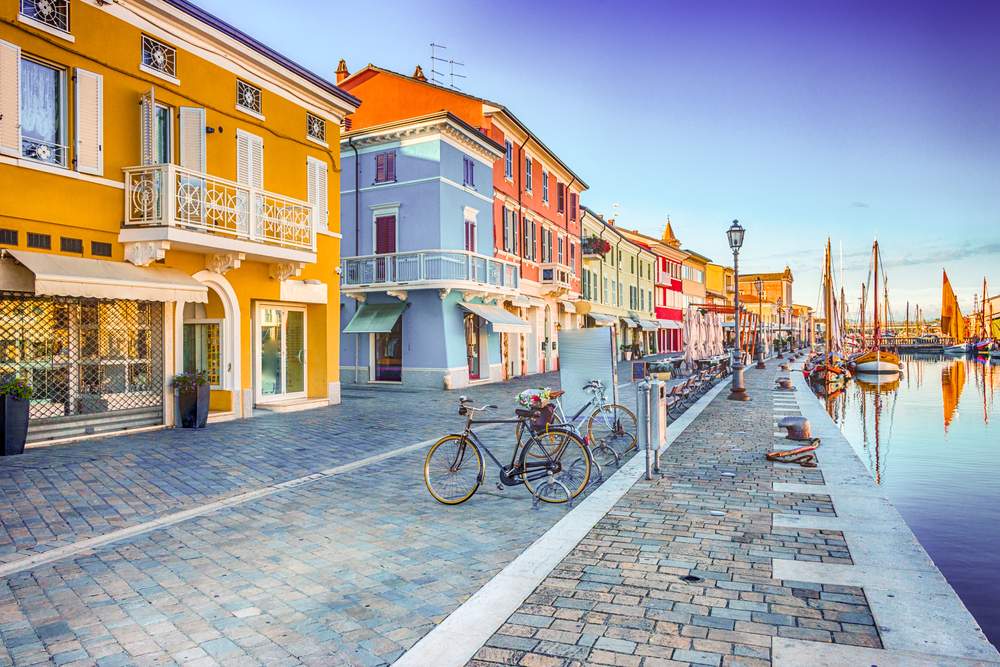
Italy is known for intense tourism and massive crowds… especially in the summer. However, during the shoulder seasons there is still much that is untouched to be found, if you’re willing to look. A perfect example:
Cesenatico, located on the northern half of the Adriatic Coast, between Ravenna & Rimini. This tiny coastal town boasts an impressive array of historical boats that are restored and maintained, along with the knowledge of how to sail them, by the citizens of this rare place.
Several inexpensive hotels in the area will support you in your efforts to slow down, savor the scents and sights of sea life in Italy, sample the local cuisine, and find a heart-shaped rock on the pebbled beach.
Hop a flight to Rome and nab a hostel in Cesenatico
7). Bad Windsheim, Germany
When you get to Bad Windsheim, you’ll definitely be off of the tourist beaten path. Of all of the places we’ve visited in Germany, this is our favorite, for local color, old-world charm, and a quiet European lifestyle. There are a number of small hotels in town to accommodate your rambles. Narrow streets are lined with window boxes dripping with geraniums. This is a place where local cobblers still work in their one-room shops below their homes and make themselves known with shoe-shaped signs made of intricate iron work.
“Worried about the language? Don’t be; thanks to an American military base nearby, lots of the locals speak at least some English.”
Be sure you don’t miss the Freiland Museum, a living history museum for the all ages presenting a whole village, including a working brewery, farm, and more. A day spent at the Freiland is like turning back the clocks to find the Europe you’ve read about in storybooks. Time your visit right and you might even catch the Altstadt Fest, in early July, when the whole town turns out to celebrate local history and you can gorge yourself on homemade sausages and solid local beer while dancing the night away to ABBA tunes belted out enthusiastically by lederhosen-clad men with accordions. Worried about the language? Don’t be; thanks to an American military base nearby, lots of the locals speak at least some English.
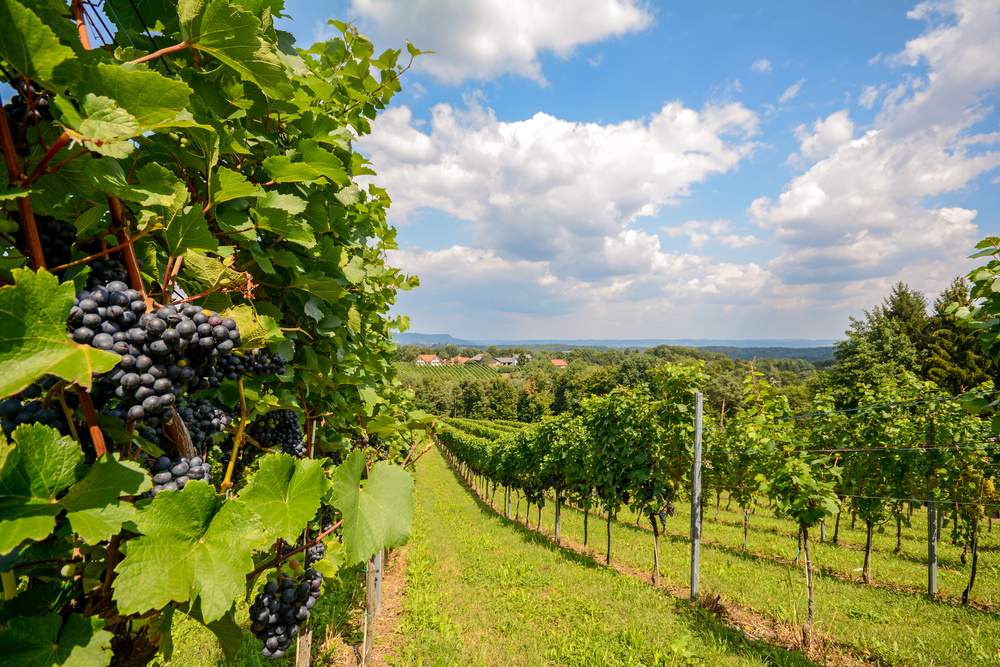
Just south of the border with the Czech Republic, nestled in grapevine-laced hills, lies the tranquil Austrian town of Poysdorf. You’ll fall in love at once with the monument in the center of town – Joshua and Caleb carrying a pole laden with enormous grapes, which seems to represent the region quite well as the promised land of central Europe, with viticulture at its heart.
“it’s the only place we know of where you can go ‘tractor touring’…imagine six or eight people piled on a tractor traveling from winery to winery…”
If you’re interested in the “real Austria,” apart from waltzing and
The Sound of Music , spend a few days exploring the wine caves and vineyards of
Poysdorf and drinking your way through the fruits of their labors, from succulent fresh juices to wines aged in casks in the dark to throat burning local liqueurs.
There’s something for every palate, here. Besides, it’s the only place we know of where you can go “tractor touring” through the countryside… that’s right… imagine six or eight people piled on a tractor traveling from winery to winery… staying on could prove a challenge by mid afternoon!
Read more about Europe:
Photo credits: shutterstock.com, claudio zaccherini /shutterstock.com, jopelka /shutterstock.com, haak78 /shutterstock.com, Sara Winter /ilolab /shutterstock.com, Shutterstock.com /shutterstock.com, Kanchanawat Sompomtip /shutterstock.com, GoneWithTheWind /shutterstock.com, /shutterstock.com, ah_fotobox.






